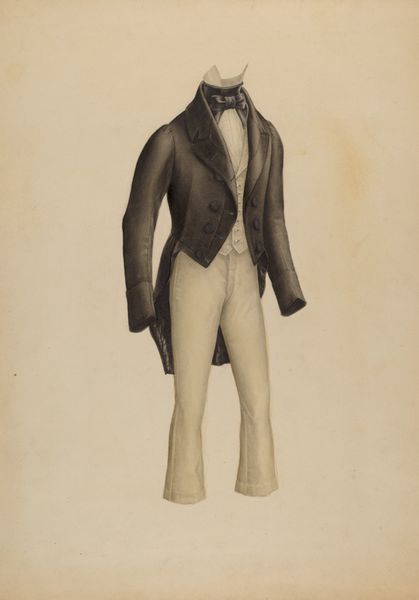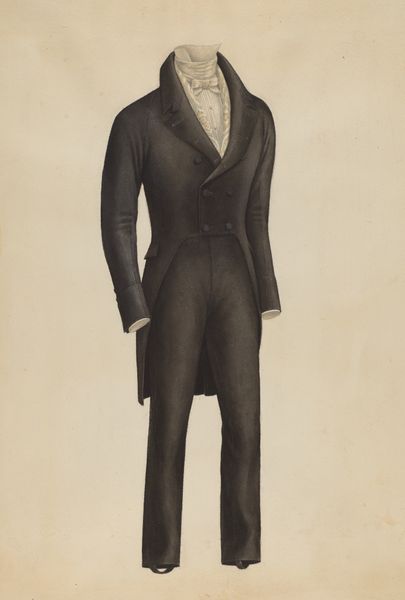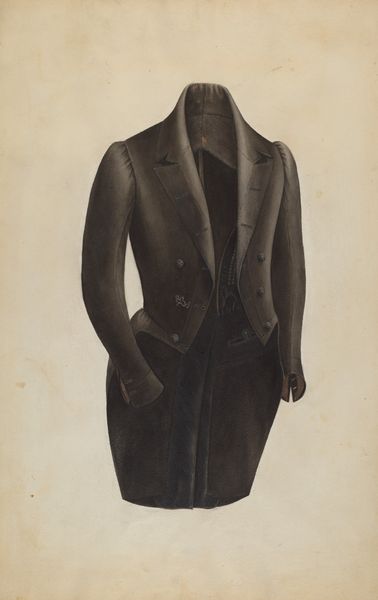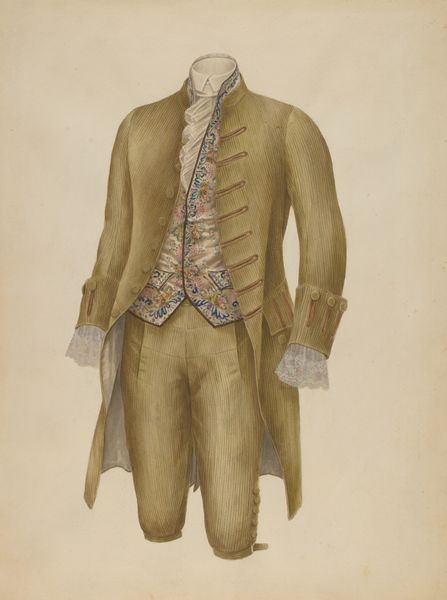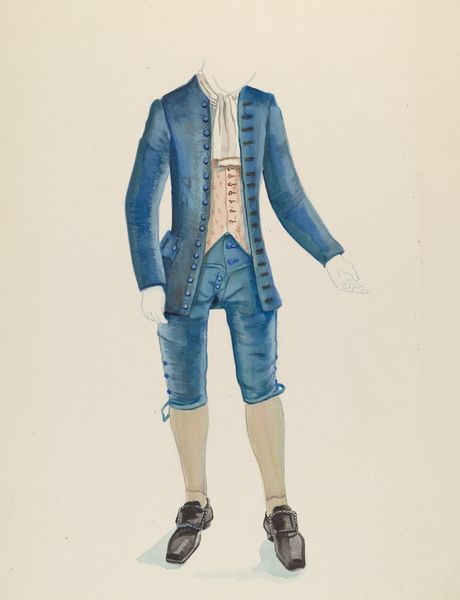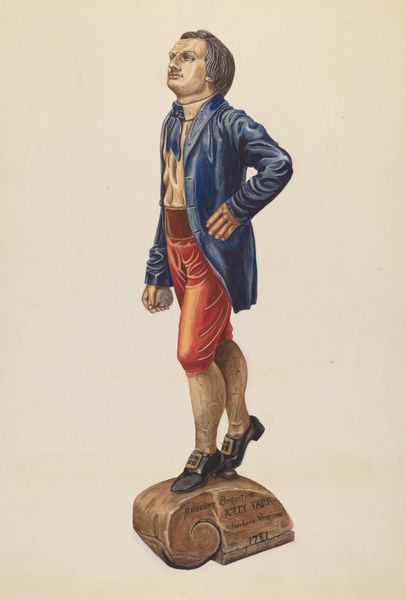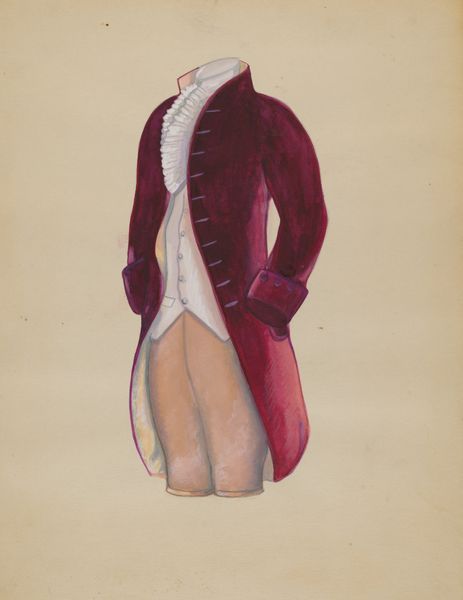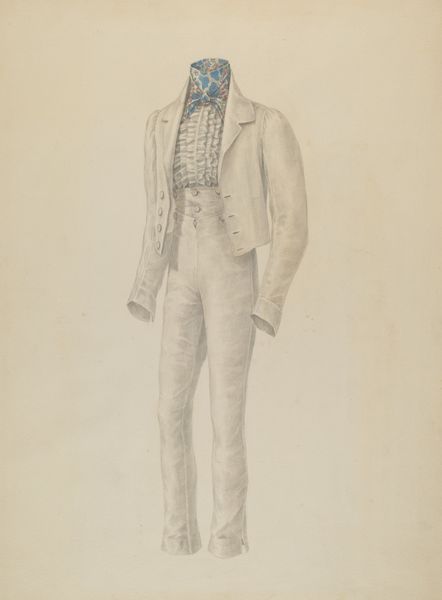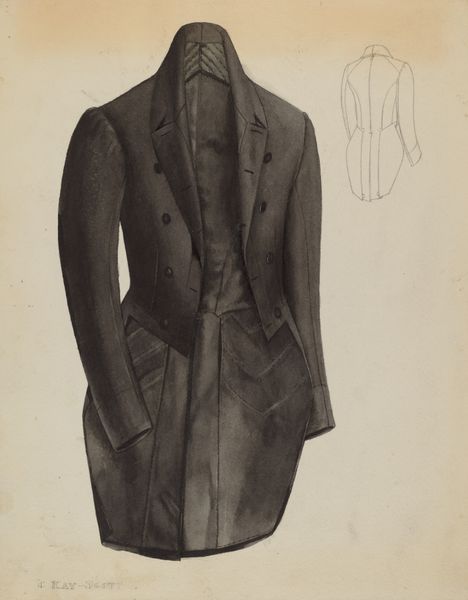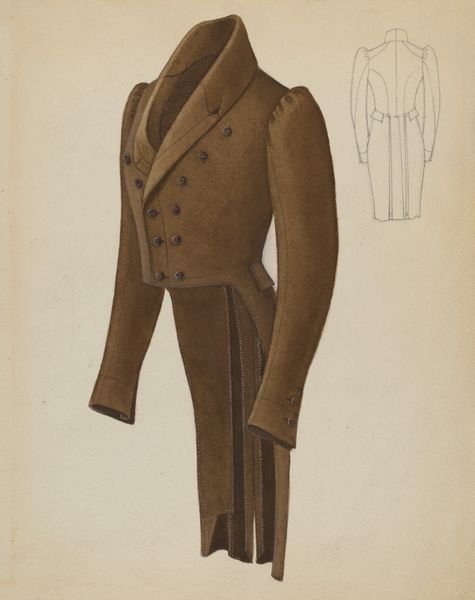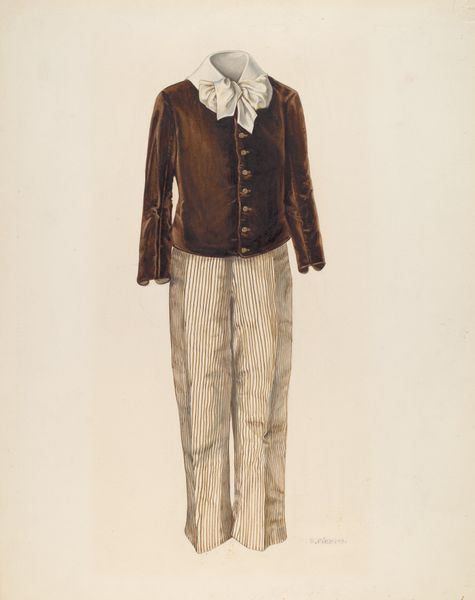
drawing, graphite
#
drawing
#
charcoal drawing
#
figuration
#
charcoal art
#
graphite
#
graphite
Dimensions: overall: 50.2 x 37.8 cm (19 3/4 x 14 7/8 in.)
Copyright: National Gallery of Art: CC0 1.0
Curator: This is "Man's Suit," a drawing created between 1935 and 1942, using graphite and charcoal. Editor: It’s startling how isolated the suit feels on the page, devoid of a body. The attire seems to float, suggesting absence, but perhaps also a ghostly presence of the figure who once wore it. Curator: Considering its time of production, the imagery feels quite poignant. Look at the specific tailoring and consider its materials: the formality of the tailcoat, waistcoat, bow tie—all indications of a certain social class and expectations around male presentation. The texture captured in graphite and charcoal reveals an incredible amount about the artistry involved in making such attire. Editor: Precisely, the empty suit, meticulously rendered, speaks volumes. We instantly recognize its inherent associations—power, elegance, societal role. It almost appears as a spectral symbol, invoking forgotten rites and performances. The period witnessed so much upheaval; might this be a visual shorthand for loss, the hollow remains of a bygone era's masculine ideal? Curator: It is worth mentioning the production aspect as well. It encourages contemplation of the textile industry itself. This isn't just an image, it's a depiction of an industrial outcome achieved via certain techniques that make the class implications all the more palpable, given the history. Editor: And consider the choice of drawing. There is something intrinsically vulnerable about rendering the sharp angles and fabrics with mere graphite. The fragility highlights what we imbue in these external emblems, these cloth containers of self, knowing the reality often shatters such illusions. Curator: Absolutely. The careful articulation of each fold speaks volumes of skilled craft that resulted in this product's availability, whether tailored or mass-produced. To really appreciate it, think of how accessible clothing manufacturing became in that time versus previous historical moments! Editor: I am taken by how this object – detached, yet somehow weighty – whispers about memory and absence. As though this shell contains something we long to reach back and touch, just out of grasp. Curator: It reminds me of our own complicated relationship with dress codes, how societal value and material constraints are embedded in our appearances and thus in representations like this one. Editor: Yes. An enduring enigma, haunting the borders between self, status, and symbolism.
Comments
No comments
Be the first to comment and join the conversation on the ultimate creative platform.
